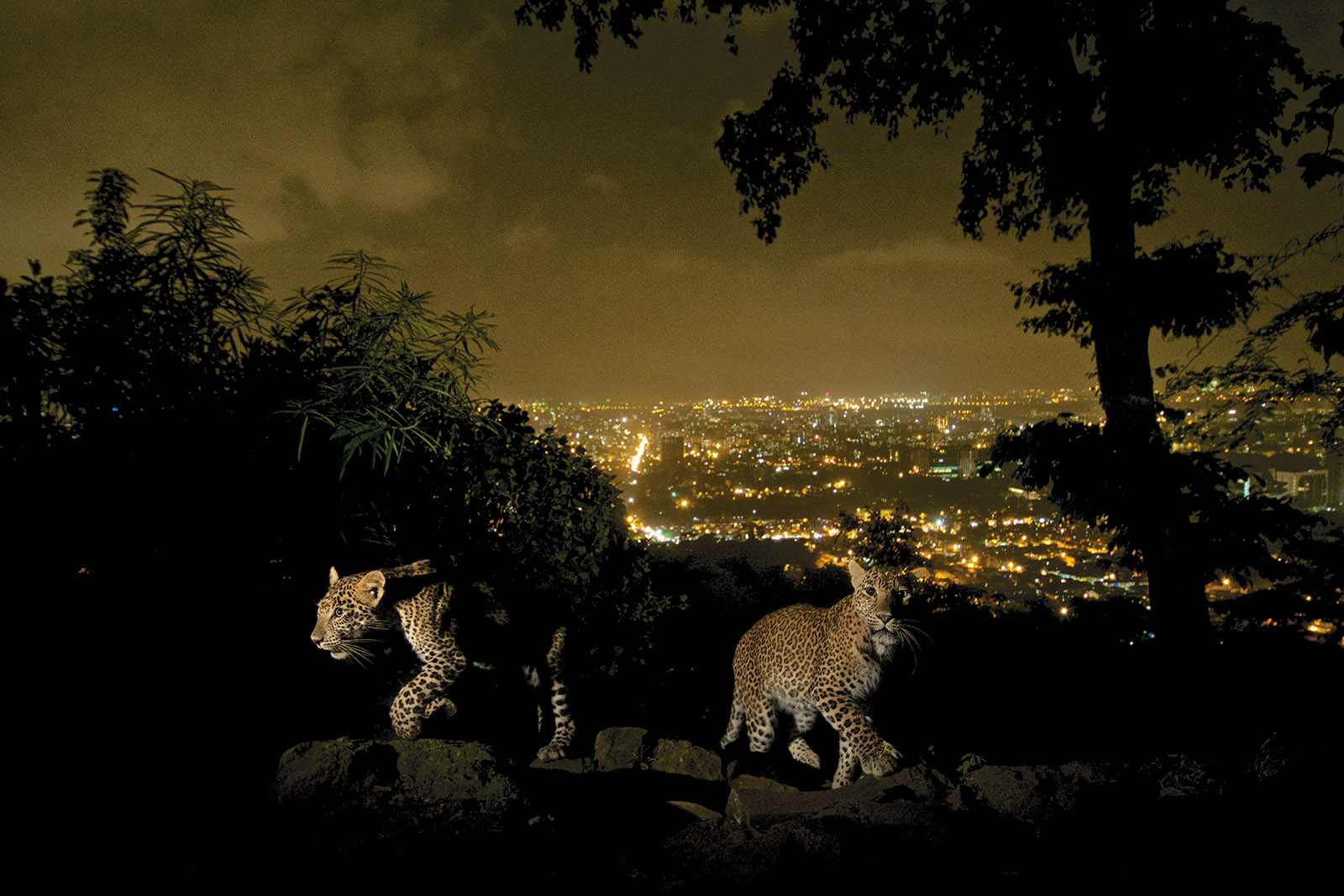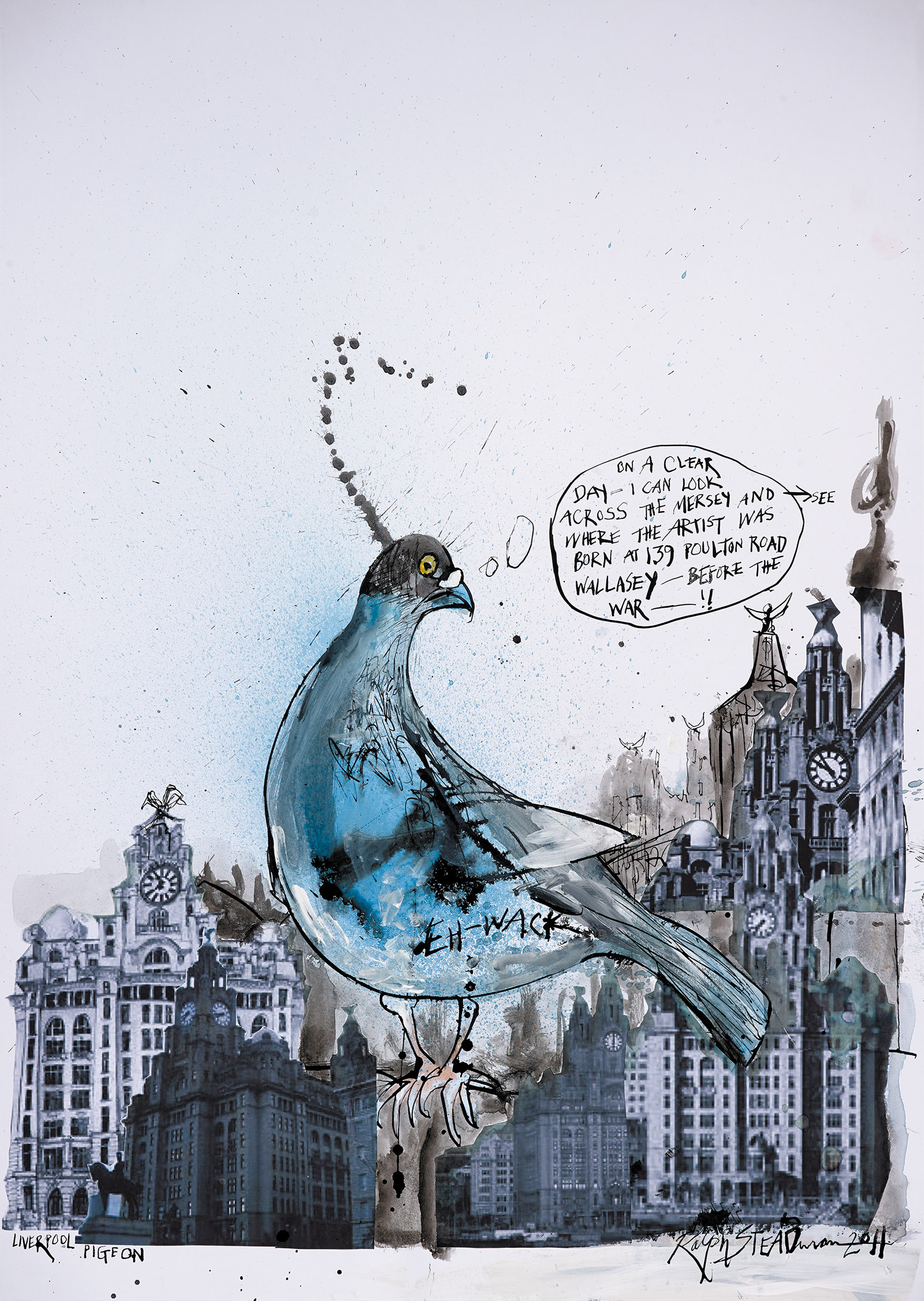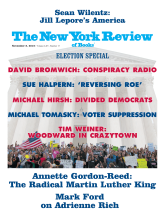In 1965 the great British ecologist G. Evelyn Hutchinson, then Sterling Professor of Zoology at Yale, published an interesting little book, the very title of which was a good starting point for understanding the dynamics of life on Earth—life in the wild, life in the countryside, life in the city. Hutchinson called it The Ecological Theater and the Evolutionary Play. His title’s point was to distinguish environment from process and immediate interactions from trends of long-term change. Of course, an ecosystem also embodies processes: photosynthesis, herbivory, predation, and competition, among others. As creatures play those ecological roles, they interact, they struggle for survival, they strive to produce offspring, they succeed or they fail, and evolution is the broader result of such challenges, the grand arc of the tale, bending dramatically through time.
Evolution by natural selection, as Darwinians believed then, and had believed ever since Darwin stated it, moved “with extreme slowness.” He had stressed that point repeatedly in On the Origin of Species. “I do believe that natural selection will always act very slowly,” he wrote, and “we see nothing of these slow changes in progress, until the hand of time has marked the long lapse of ages.” Slow though evolution may be, with selection working on tiny incremental variations, “I can see no limit to the amount of change,” Darwin added, “which may be effected in the long course of time.” Another influential ecologist and a former student of Hutchinson’s, Lawrence Slobodkin, codified that idea of slowness in his (less poetically titled) book Growth and Regulation of Animal Populations, distinguishing there between “ecological time” (relatively short, reflecting little change in roles or relationships) and “evolutionary time,” measured in hundreds of millennia, time enough for incremental evolutionary change in one species or several to disrupt the ecological status quo.
Menno Schilthuizen is a Dutch biologist based at Leiden University, in a country whose population is more urban than rural. In other words, he inhabits the future. His new book, Darwin Comes to Town, implicitly answers Hutchinson and Slobodkin—and Darwin himself—alerting us to contrary evidence about the pace of evolution. By watching the evolutionary play as it runs in urban theaters, not just wildish ones, Schilthuizen and some colleagues—you might think of them as postmodern biologists, making the best of highly urbanized twenty-first-century landscapes—have noticed that evolution’s tempo can be surprisingly brisk.
Fast evolution in cities is the theme here, unfolding toward a suggestion that perhaps new species are being born in our time, while many older ones are being driven to extinction. For instance, has the Eurasian blackbird (Turdus merula) differentiated sufficiently—in certain urban environments where it enjoys warmer temperatures, abundant food scraps, and freedom from predators—to constitute a new species, which Schilthuizen would like to call Turdus urbanicus? Maybe, almost. “The constellation of European cities has become urban evolution’s Galápagos, and Turdus merula its Darwin’s finch.” He has many other examples, and even calls the phenomenon by an acronym, HIREC, meaning human-induced rapid evolutionary change. This is Schilthuizen’s version of cheerful news in what, for lovers of biological diversity, amid the ongoing trend of habitat destruction and species loss, seems a very dark time.
Why should evolution move more quickly in cities than elsewhere? One answer Schilthuizen offers is the sheer strength of natural selection (in jargon: the selection coefficient) that human environments can exert, giving a mutant (and fortuitously city-suited) form of some species an advantage over the wild form. If the selection pressure is high enough, dramatic changes can take hold in only a hundred generations or so. For many insect and bird lineages, that’s just a century.
Whether fast urban evolution really promises to deliver new species faster than old ones are lost is another question. Speedy adaptation to urban environments, achieved by a relatively short list of animals and plants and other living forms, should not be confused with a regeneration of biological diversity. Evolution has two modes: anagenesis and speciation. In the former, a single lineage changes over time. Without doubt, that’s happening in cities. In the latter, new species arise when one lineage fissions into two.
Although lineages continue to bend, in our time the net trend of species lost versus species gained is still downward. Cities may nurture their own unique rodent faunas and scavenging sparrows and dandelion variants, but they probably won’t ever harbor populations of citified polar bears, tigers, addax, and other big, inconvenient creatures. (The leopards that forage in the streets of Mumbai, just outside Sanjay Gandhi National Park, are an exception. And they’re highly inconvenient, if you happen to be a stray dog.) But let’s set that question, about overall gains or losses of biological diversity, aside for the moment. Schilthuizen’s book is fascinating enough for what it describes, never mind what it might promise.
Advertisement
An intriguing case is a blood-sucking insect (Culex molestus) commonly known as the London Underground mosquito. Its closest relative is the northern house mosquito (Culex pipiens), a widely distributed species that lives aboveground, goes dormant in winter, mates by swarming in open spaces, and takes its blood meals from mammals or birds. The London Underground mosquito has acquired, within decades, not centuries or millennia, a contrasting set of habits: life in the subway tunnels of London and other cities, year-round activity (because it’s warmer down there), mating discreetly in tight spaces, and getting its blood meals mostly or solely from humans. Some of those traits made it notorious during the Blitz of 1940–1941, when many Londoners spent their nights in the Underground, sheltering from German bombs, with biting mosquitoes adding misery to terror.
Schilthuizen mentions a landmark study, done twenty years ago, in which the London geneticist Katharine Byrne collected mosquitoes from above and below the streets of London and showed that their differences in life history characteristics were rooted in genetics. The London Underground mosquito had evolved to its new form. Furthermore the three different tube lines from which Underground mosquitoes were sampled—the Central, the Bakerloo, and the Victoria—contained populations genetically distinct from one another. The only point where those lines cross is at Oxford Circus, one of London’s busiest stations, and the mosquitoes evidently hadn’t been making the transfer.
“The evolution of the London Underground mosquito speaks to our collective imagination,” Schilthuizen writes. It reminds us that evolution is still happening, sometimes briskly, and in response to the single greatest agent of environmental change on the planet: us. “What if our grip on the earth’s ecosystems has become so firm,” he asks, “that life on earth is in the process of evolving ways to adapt to a thoroughly urban planet?”
His other case studies, wrapped genially in anecdote, include the house crows of Singapore, the coyotes of Chicago, the ring-necked parakeets of Paris, the European starlings that began their North American colonization from birds released into Central Park, the dandelion-like hawksbeards blooming yellow amid the pavements of Montpellier, and the 529 species of ichneumonid wasp to be found in the city of Leicester. Schilthuizen’s point about such creatures is not just that they tolerate urban environments but that many such lineages have adapted, by measurable or inferable genetic change, to those environments—the urban theater, the evolutionary play.
One study showed that the wings of American starlings have become more rounded, which has helped them, Schilthuizen speculates, make nimble escapes from “a pouncing cat or a speeding motorcar.” The hawksbeards of Montpellier, growing in small squares of soil around street trees, now produce more seeds that are large and heavy, dropping into the dirt just below, and fewer light seeds with silky parachutes meant to carry them away on the wind. And then there’s a humble little fish called the mummichog (Fundulus heteroclitus), a bottom-wallowing native of brackish waters along the Eastern Seaboard, including big urban ports such as Bridgeport, Connecticut, that are silted up with decades of toxic chemicals such as PCBs and other industrial waste. A genetic study of Bridgeport’s mummichogs, Schilthuizen reports, found genome changes that protect those fish from the effects of PCBs. Who says there’s no good news in the Proceedings of the Royal Society of London?
Schilthuizen tells his tales and explicates his concepts in jaunty, conversational language, with an occasional hip turn of phrase or a wink of humor. The sexual quests of the dark-eyed junco, a kind of sparrow, are reimagined as a personal ad for the Campus Newsletter for Birds: “Caring male with almost no white in tail seeks acquaintance with female…,” et cetera. Discussing that emergent species of blackbird, Turdus urbanicus, he mentions that it sings in the dead of night, and he can’t resist otherwise evoking Paul McCartney: “It was only waiting for this moment to arise.” These bits of levity don’t always work, but you can’t fault Schilthuizen for trying.
The most notable story in his catalog of evidence is one you’ll recognize, though some details have recently changed. Remember the peppered moths of nineteenth-century Britain, that textbook case of evolution by natural selection occurring so fast that human memories could record it? The moths (Biston betularia) lived in a forest outside Manchester and had creamy white wings peppered lightly with dark spots—good camouflage against the pale tree trunks—until upwind smokestacks from coal-burning factories blackened the trunks with soot. The pale moths, now against darkened backgrounds, were no longer invisible to predatory birds. The birds ate the pale moths, but missed the few soot-black mutants that had turned up, thereby soon transforming the entire moth population into black-winged forms. So went the classic Darwinian explanation, anyway.
Advertisement
The evidence supporting that scenario was temporarily discredited in the 1990s (to the delight of creationists), but recent work confirms the original version, with a new twist. Sequencing of the peppered moth genome has revealed that the color change from pale to dark occurred not by incremental mutation, as Darwinists would have supposed, but by the sudden insertion of a transposon (a “jumping gene”) into a certain gene known as cortex, which controls wing coloration. The insert was hefty, about 22,000 DNA letters long, and it jumped into its disruptive position around 1819, just when the mills of Manchester were really starting to belch.
The transposon that “wedged into the cortex gene,” Schilthuizen explains, proved to be “a spanner in the works that normally produce the delicate white-and-black speckled wing pattern.” Suddenly there was a lineage of dark-winged moths, and, with birds plucking away their pale-winged competition, they thrived and multiplied. The message here is even broader and more interesting than Darwin coming to town; it’s that genetic innovation, generating the variation within populations upon which natural selection works, can sometimes occur in great leaps, not just by incremental mutation. “Natura non facit saltum,” Darwin wrote in The Origin, quoting the old adage (nature does not make a jump), but as regards the origins of variation, he and the adage were wrong.
That wrongness has been illuminated by important work on the molecular aspects of evolutionary biology in recent decades, to which Schilthuizen’s description of the jumping gene in peppered moths glancingly alludes. Researchers who study deep phylogeny (the patterns of relatedness over hundreds of millions of years) through the evidence of DNA and RNA sequences have announced some other big surprises. Besides transposons bouncing from one position to another within a genome, genes and transposons have also been moving sideways between genomes of unrelated species, carrying whole packets of fresh genetic variation from one species to another. This counterintuitive phenomenon is known as horizontal gene transfer. It was once thought to be impossible (after all, weren’t genes supposed to move only vertically, from parent to offspring, not sideways from, say, kissing bugs to possums?), but it happens, and evolutionary theory in the Darwinian tradition has only just begun absorbing these weird new data.
Schilthuizen, meanwhile, offers all his delightful cases—the moths and the mummichogs and the others—as evidence that biological diversity is higher in urban environments than most of us would expect. He cites four reasons. First, cities are continuously receiving migrant individuals of exotic species from other parts of the world, because of international travel and transport, and many of those migrants establish resident populations. Second, cities tend to arise in places (riverbanks, estuaries, harbors) already rich with diversity. Third, intensively farmed agricultural lands around cities tend to preserve little habitat (unless you consider English hedgerows), and so cities, with their parks and other green spaces, might actually become refuges for local wildlife. Fourth, the partitioning of cities by freeways and other barriers leaves them with a diversity of isolated habitat patches. Did you know that the population of bobcats living east of Interstate 405 and south of Route 101, in Los Angeles, is genetically distinct from the bobcats of Thousand Oaks? Neither did I, but I agree with Schilthuizen that it’s a nifty fact.
Not just southwestern California and Europe but much of the world, of course, is growing inexorably more urban. In 2007, Schilthuizen notes, we passed a benchmark: for the first time in history, more than half of all humans lived in cities. That roughly mirrors the proportion in Schilthuizen’s Netherlands. By the middle of this century, the fraction will rise to two thirds: six billion of the nine billion people on Earth will be urban, with all the concomitant effects, good or ill, on our planet’s biotic richness. “And yet,” he writes, “when we talk about ecology and evolution, about ecosystems and nature, we are stubbornly factoring out humans, myopically focusing our attention on that diminishing fraction of habitats where human influence is still negligible.”
Well, no. That’s a straw man, if not a plain misstatement. The best conservation efforts of which I’m aware, such as the Gorongosa National Park project in Mozambique, are acutely attuned to the need for valuing and assisting humans as legitimate inhabitants of the greater landscape. “It’s time to own up to the fact that human actions are the world’s single most influential ecological force,” Schilthuizen adds. The crucial point there is that he calls our actions “ecological.” They certainly are—in the same sense that a volcanic eruption or an asteroid impact is ecological.
The big question that concerns Schilthuizen—and, one hopes, all of us—is: What is the net effect of our vast “ecological” puissance on biological diversity? Are we headed downward toward a lonely future, largely lacking the spiritual and aesthetic benefits, the ecological services, of various and teeming biological communities? It seems we are, and Schilthuizen doesn’t dispute that. But he argues that citified nature, as continuously refurbished by evolution, will be a great mitigating factor, and that it deserves to be celebrated for that.
There’s a flaw in this optimistic view, and Schilthuizen mentions it himself. Some kinds of creatures, a relatively short list, are much better than others at adapting to city life. The Indian house crow. The rock pigeon. The Eurasian blackbird. The Norway rat. The cellar spider. Even the peregrine falcon can do well in deep urban canyons, if there are pigeons on which to swoop and feed. Schilthuizen also mentions tall fescue grass, “originally from Europe, but now found on any lawn between the two poles (including the south lawn of the White House).” Unfortunately the urban list tends to be the same everywhere—from pole to pole, as he says, and from east to west, from one city to another: “Such global homogenization of urban ecosystems is much more pervasive than these few anecdotal examples suggest.”
One label for such creatures (coined by Jared Diamond back in 1974, when he was a young membrane physiologist with a sideline in bird ecology) is “supertramp species.” These supertramps do get around. Another label is “weeds,” in the sense that animals as well as plants can be weedy. The traits that make them weedy are that they travel well, thrive in a variety of new landscapes, reproduce quickly, and compete effectively against native species, often eliminating the more specialized local forms. Follow our current trajectory a century or two into the future—the trajectory of vanishing wildness, extinction of endemic species, increasing urbanization, easy transport of people and certain other creatures among metropolitan hubs—and what you’ll see eventually is a planet of weeds.
Schilthuizen’s book is a bright, affable addition to this important subject. The drama of urban evolution he depicts may indeed help, in that paved and skyscraping ecological theater, to equip our rats and our pigeons and our spiders and our mosquitoes against final oblivion, and to soothe slightly our starved appetites for the beauty and wonder of nature. It might even transform those bobcat populations living east and west of the 405, eventually, into two discrete species of feline. But don’t count on that. Fast evolution, of the sort he describes, just isn’t fast enough to give gains that keep pace with the losses. Most of nature’s glories, unlike Darwin, will never voluntarily come to town. Alas, if your great-great-granddaughter wants to see a gorilla, given our current sorry trends, she’ll probably need to go to a zoo.
This Issue
November 8, 2018
MLK: What We Lost
‘Inventing New Ways to Be’





